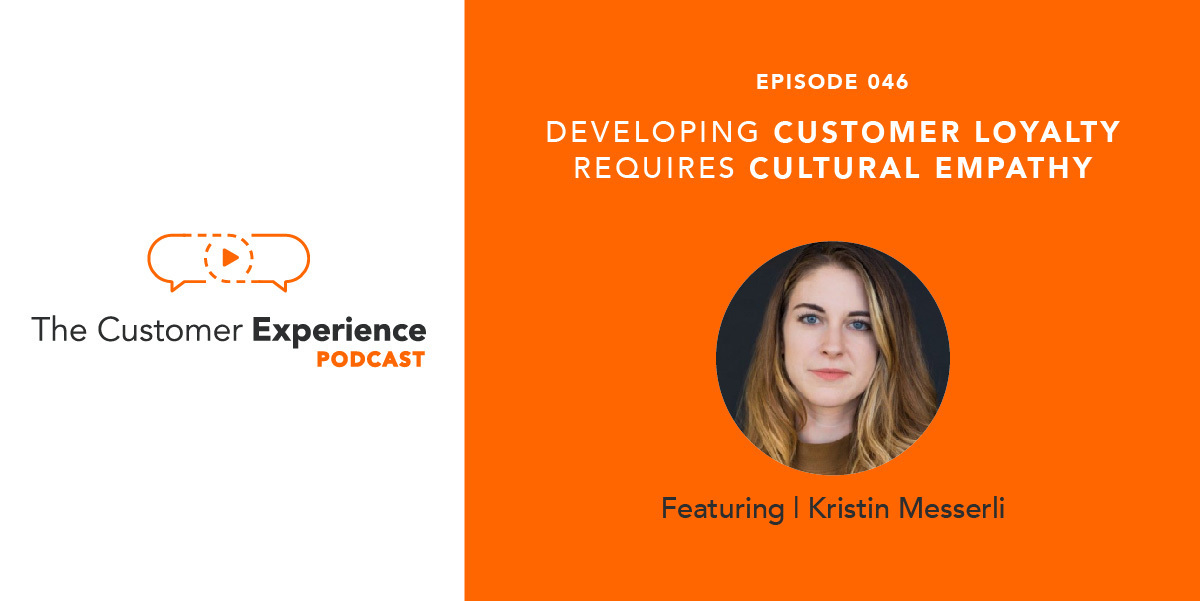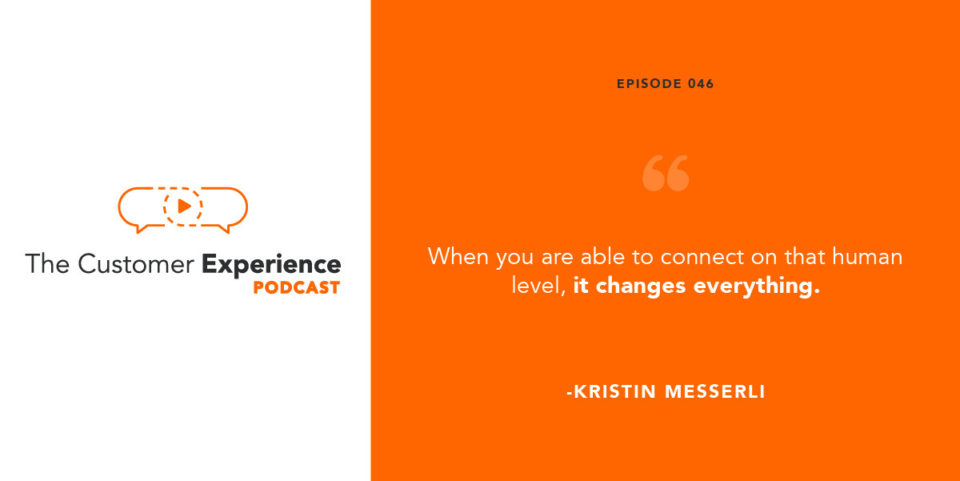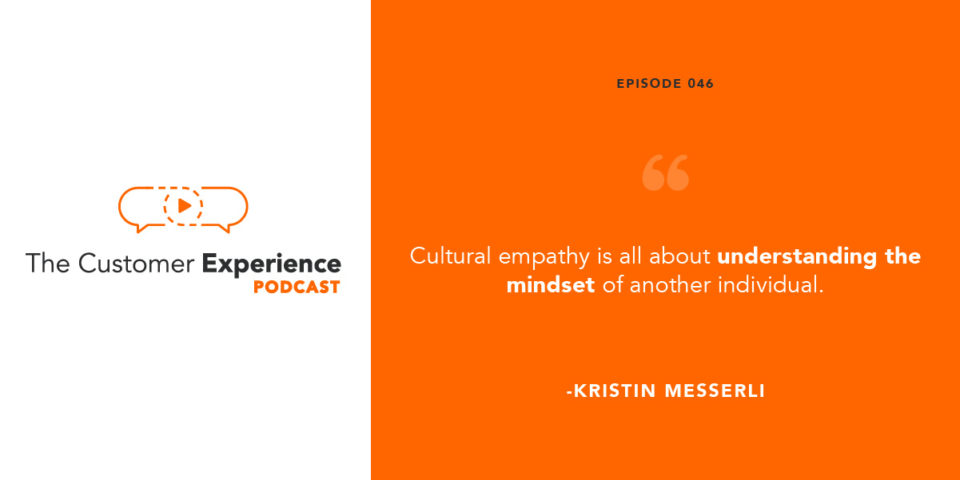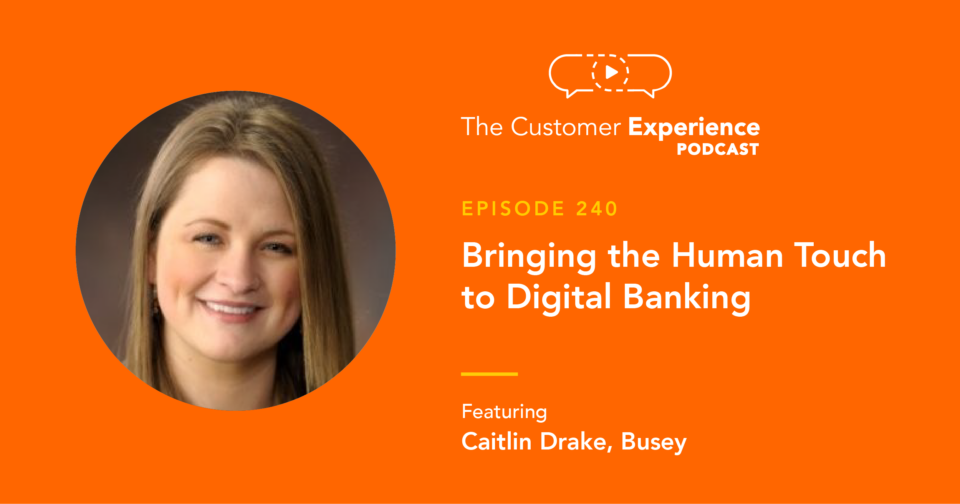
Apple Podcasts | Google Podcasts | Stitcher | Spotify
Imagine designing and executing an elaborate and important marketing campaign – only to find out that it didn’t resonate with majority of people in your target audience. This is actually a reality for many businesses, and the missing piece of their campaigns, messages, and customer experience is cultural empathy.
Nielsen reports that multicultural consumers are the fastest growing segment of the U.S. population and accounted for 92% of population growth from 2000-2014. And The Brookings Institution reports that 44% of millennials identify as having minority backgrounds, making them the most diverse generation in the nation’s history.
Yet, in Kristin Messerli’s tenure as a social worker serving immigrant communities, she discovered that there was a large gap in how businesses were communicating and marketing to the clients she served.
So, five years ago she started Cultural Outreach to bridge the gap of diversity in the one of the consumer market’s largest groups. In doing so, she’s helped businesses tailor their customer experience to younger and more diverse audiences.
In the latest episode of The Customer Experience Podcast, we discuss the importance of cultural empathy in CX with Kristin. We analyze generational differences and characteristics to consider, the crucial role video plays in showing empathy and making connection, and specific ways to learn about new audiences to build relationships with them.
Kristin is a cultural empathy expert and practitioner, and offers great insight into reaching new markets. She’s the founder and CEO of Cultural Outreach, a company dedicated to training and helping businesses really reach and engage with consumers across generations and ethnic backgrounds.
She describes customer experience as what you think and feel when using a particular product.

And Kristin explains that this definition has evolved as consumers have become more and more passionate about receiving a good customer experience. She details this in the clip below …
So, a great customer experience stems from your ability to empathize and connect with your customers through your marketing. To really accomplish this there are three factors you need to keep top of mind:
1. Age Diversity
2. Ethnic Diversity
3. Socioeconomic Background
“All those things play a factor in thinking about how someone is going to connect with your message, and how your content, your communication or experience is really going to connect with that audience,” Kristin says.
Listen or read as she guides us through why cultural empathy is crucial to developing loyal customers. Kristin fills us in on:
- Managing generational differences in customer expectations
- Engaging millennials as employees
- Sending personal videos for human connection
- Adopting cultural empathy in the business setting
- Learning about new audiences to reach them more effectively
- Refusing to put individual people into generalized buckets
Developing Customer Loyalty Requires Cultural Empathy
Highlights and video clips of The Customer Experience Podcast are available here on the blog, but you can also hear this episode – and many others – on your preferred podcast player.
Subscribe, listen, and rate/review on Apple Podcasts, Spotify, Google Podcasts or Stitcher.
You can also listen to the episode on this post. Hear my entire conversation with Kristin about cultural empathy right here…
Generational Differences in Customer Expectations
Millennials grew up with technology in a very different way than Gen X and Boomers. They had access to technology – and the wealth of information that comes with it – much earlier in their lives. And this results in them having different expectations of businesses as consumers.
Kristin notes a few key discrepancies between customer experience expectations of millennials and those of previous generations in the following video …
These contrasting customer expectations include:
• Responsiveness – When interacting with a business, millennials expect prompt responses. They expect companies to have the processes in place to deliver results as quickly and cost-effectively as possible. She points out that, “If you don’t respond right away, or they’re not able to access someone really quickly, they move on so much faster than someone from a previous generation.”
• Quality – Millennials have experienced the evolution of modern tech. Subsequently, they understand the quality that’s possible – and have come to expect it. Because of this, Kristin says, “Companies are seeing an immediate need for updating their design.” They’re doing this by tightening up their websites and apps to ensure they have a modern feel and better UI/UX/CX and by engaging more on customer review sites.
• Responsibility – Kristin explains that because many millennials entered adulthood shortly after the 2008 financial crisis, they tend to be very wary and less trusting of large corporations. “And so building that trust through community involvement or a humanizing factor, like video, is a really big need for a millennial consumer,” she says.
Each one of these expectations is bound tightly to the customer experience that millennials expect to receive, and disregarding any of these factors can hinder their journey as consumers of your product or service.
Engaging Millennials as Employees
Because millennials make up a large portion of the consumer space, they obviously account for a huge chunk of the country’s workforce, too. In order for them to provide a good customer experience to others, we – as employers – need to make the effort to understand them as employees and create a work environment they are happy with and motivated by.
The biggest priorities for businesses to foster high work performance among this generation: upward mobility, skill development, and team culture.
She details what this encompasses in the video below …
By upward mobility and skill development, she emphasizes that it’s about giving them the skills and opportunities to “make more and climb in the ranks.”
Optimal work culture isn’t just achieved by having ping pong tables or beer on tap in your office. It requires building relationships on an individual level to achieve this.
Younger employees expect to feel truly engaged in the organization they work for and have ownership over their projects. And this, in turn, makes them feel like they are making a positive impact in the world. All of these combined feelings result in more productivity – and better outcomes for your business.
So, in order for your millennial employees to thrive in their work, Kristin says it’s critical to:
• Have strong mentorship within the organization: Having a professional mentor helps a younger employee develop the right skills and keeps them accountable. Mentorship also gives employees a peek into what the future may hold for them, and plays a big part in building team culture.
• Provide employee validation: When employees are told they’ve done a good job, it makes them feel appreciated and confirms that the work they do matters. And this boost in confidence leads to a boost in their productivity.
• Use short, personal videos: A quick video of yourself telling an employee “thank you” or “good job” or “congratulations” can make a big difference for how they view the work culture. Adding a human touch can go a long way in any professional relationship.
Kristin elaborates on the value of these thank you videos in the following clip …
Understanding millennial employees and tailoring a work atmosphere to their wants and needs can go a long way. Kristin says, “It’s learning our psychology and what’s going to make us more productive and loyal to you as an employer.”
The Vital Role of Video for Cultural Empathy
The value of video transcends internal communication efforts with your millennial employees (and all of your employees, for that matter!). It’s also a powerful way to deepen your relationships with customers and partners of every age.
Kristin has experienced the impact of video first hand, recalling a time a client sent her a video email expressing appreciation for the work she did. It served as a reminder of why she does the work she does and made her feel closer to that person and organization.
“For them to communicate that on a personal level was a really inspirational experience,” she says.
She further details the vital role of video in building trust and relationships with younger and more diverse customers …
By sending these customers a video, it shows them that you are responsive and you care. It shows them that you are someone they can trust. And it proves to them that you are committed to providing them with the customer experience they long for.
The video emails you send can be anything from a response to a question these customers have to a “Happy Birthday” message. And they can watch it on their own time without having to take an additional step of scheduling a call.
“I love what video can do for someone’s life and, of course, their business,” Kristin says. “When you are able to connect on that human level, it changes everything for the consumer and developing their customer loyalty.”

Adopting Cultural Empathy in Business
Understanding the generational and cultural distinctions of consumers needs to be a key element driving the customer experience your company is providing.
Kristin explains why this cultural empathy is necessary and what it entails in the video below …
“You might deliver your customer experience in a certain way and not realize that it is not connecting with certain demographics, like millennials or non-English speaking clients,” she says. “So, how do you empathize and understand where they’re coming from and what is going to connect with them to make the adjustment?”
Kristin found the answer to this question in her time as a social worker. She spoke Spanish fluently, but was finding it difficult to build trust and connect with her clients. And this was because she was following the Golden Rule, and treating others the way she would want to be treated.
But the Golden Rule doesn’t work most of the time in business because it should be about treating customers the way they want to be treated.
So, she made the switch from going through appointments quickly and efficiently – the way she thought her customers would want based on her own background, preferences, and experiences. Once Kristin really grasped that her clients embraced a slower and more personal approach and that they wanted to get to know her before getting to the business side of things, they started opening up a lot more.
“In really understanding those cultural nuances of your customers and employees across the board, you can build these connections that have really meaningful results,” she says.
This is exactly what cultural empathy entails. It’s about really putting yourself in your customers’ shoes to understand their mindset.

Recognizing what other cultures value will broaden the scope of your reach to consumers across generations and ethnicities because you are making the effort to create unique customer experiences around them.
How to Learn About New Audiences
Adopting cultural empathy in your business will be a continuing learning experience. New audiences have various perspectives and values, and Kristin says two ways to figure out what they are include:
1. Quantitative research through online surveys can yield a substantial number of responses in order for you to average out the feedback.
2. Qualitative research through one-on-one interviews is an effective way of gaining a personal perspective from individuals of a different culture.
Both methods are detailed in depth in the following video …
She also stresses the importance of social partnerships and community outreach to acquiring more knowledge on these new audiences. This can be as simple as following everyone you meet on social media to build that relationship, or spending some time where these customers you want to reach are located to connect with them.
But it’s crucial to avoid putting individual people into generalized buckets as you work to implement cultural empathy in your company because no person likes to be put into a box. Kristin elaborates on this in the following clip:
“All of us are on some spectrum of diversity in some way,” she says. “It is really important that we understand the differences, so we can be really comprehensively ready to serve and reach customers from whatever background and mindset you may have in front of you.”
This post is based on an interview with Kristin Messerli, Cultural Outreach founder and CEO. For a fun story of a memorable customer experience she had, click here.
Get More From The Customer Experience Podcast
Where to subscribe, rate, and review this podcast:
Listen to similar guests and topics right now:
- “No, Your Customer Isn’t Always Right” with Jaime Casap (Chief Education Evangelist, Google)
- “‘The Holy Grail’ of Connection With Your Customers” with Ann Handley (Author of the WSJ bestseller “Everybody Writes”)
- “Company Culture As Your Competitive Edge” with Lance Risser and Levi Ayriss (VPs of Field Operations, Dutch Bros Coffee)
Hear from our upcoming guests, including:
- Scott Barker, Head of Partnerships at Sales Hacker and Sales Engagement Evangelist at Outreach
- Brian Robinson, Author of The Selling Formula & VP of Strategic Partnerships at Works24
- William Ammerman, author of The Invisible Brand (Marketing in the Age of Automation, Big Data, and Machine Learning) and EVP of Digital Media at Engaged Media
Show Empathy with Simple, Personal Videos … Here’s How!
A simple but effective way to show cultural empathy with customers and team members is to have genuine human interactions and conversations with them. But with limited time in your day, face-to-face connections can be hard to achieve.
Good news: there’s a way to cultivate these relationships at scale. The answer is simple, personal vieos recorded with your webcam or smartphone and sent to the people who matter most to your business.
How do you do it? “Rehumanize Your Business” is just the tool to walk you through your journey into videos in emails, text messages, and social messaging.
The book is an Amazon #1 bestseller in Business Sales, Business Communication, and Customer Relations, the Porchlight Books #1 bestseller in its opening month of release, and a Barnes & Noble bestseller in its opening week of release.
Click right here to learn more and decide for yourself if this book is just the guide you need for you and your business.





